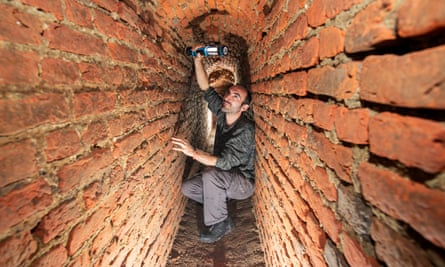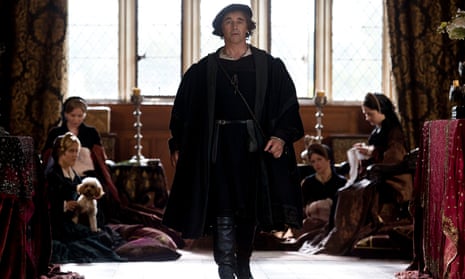The Wolf Hall made famous by Hilary Mantel’s historical novels, has been unearthed, 500 years after it was razed to the ground.
The magnificent home of the Seymour family, where the Tudor king Henry VIII first showed an interest in his third wife, Jane Seymour, fell into ruin 40 years after it was built. Over time it became unclear where the house was located or what it looked like.
Now original features of the 16th-century property have been uncovered by archaeologists and historians, who have proved its location. The discoveries were made in the grounds of the much later built Wolf Hall Manor that remains today in Burbage, Wiltshire.
The remarkable findings include a network of Tudor brick-built sewers and some of the foundations of two towers and several large rooms of the palatial home. Ornate tiles that are likely to have been walked on by Henry VIII were also dug up.
Following Mantel’s award-winning books and the hit TV adaptation, the owners of Wolf Hall, who are direct descendants of the Seymours, have allowed archaeologists to explore the site for the first time. The team has spent 20 months on the project.
Dominic Binney and his siblings, Theo, Orlando and Genevieve, inherited Wolf Hall Manor in 2013 from their mother. “I was completely oblivious [about] what was beneath our feet for so long, and I never could have imagined what was hidden in the garden,” he said. “Growing up, we were given so many mixed ideas from different people of where the original Tudor manor was, the feeling was no one really knew for sure. The Seymours were in charge of a large area.”

Sir John Seymour, Jane’s father, was warden of the royal hunting forest of Savernake, and the Tudor Wolf Hall was built in the early 1530s with a loan from King Henry, and was brokered by Thomas Cromwell, of £2,400 (about £1m in today’s currency). The house was rapidly built in time for Henry’s visit in 1535 with his second wife, Anne Boleyn. Historians believe it was during this visit that Henry first noticed Jane Seymour and began wooing her.
Mantel’s Man Booker-winning novel Bring Up the Bodies starts with Henry’s visit to Wolf Hall in 1535, and Cromwell’s sharp eye for the king’s growing affection for Seymour. He describes families rushing to prepare for the king’s visit during the summer: “Every household strives to put its best show for the king, and we’ve seen some panic-stricken plastering these last weeks, some speedy stonework, as his hosts hurry to display the Tudor rose beside their own devices.”
By 1571, Wolf Hall lay derelict. It was demolished in 1723. There is no surviving picture of the property as Henry would have seen it, but historians know from records it was a grand home with a king’s chamber, broad chamber, long gallery, gatehouse, armoury, halls, kitchens and eight gardens.
Historian Graham Bathe, who led the dig, said: “I approached the family because I had been working on researching Savernake Forest for about 20 years and Wolf Hall is absolutely central to that research.
“I thought the likelihood was that the Tudor house would be on top of the hill. We had this extensive set of tunnels, which we have now identified as Tudor sewers, to guide us a bit, and then it was trial and error.
“Walk-through sewers were unknown until Henry VIII’s time and these would have been extremely prestigious – there’s 140 yards in total, it’s an extensive network.
“The intention must have been to make it attractive for the king to visit and garner more favour. Nobody could have foreseen that the daughter of the household would marry the king.”
The team have uncovered the base of a hexagonal tower, along with stonework featuring early chisel marks and pieces of tiles. “We’ve found lots of oyster shells and animal bones, relics of the feasts they would have had,” says Bathe. “We have records of the menus from Henry’s visits, so we have an idea of what they ate.”
The archaeological team hopes to reconstruct what the original house would have looked like, but the project could take years.
Meanwhile, the Binney family plan to organise visitor attractions and events in the future to help fund work to restore and repair the existing property.
Dominic Binney said: “Before Hilary Mantel’s books and the BBC series we got maybe one visitor a year. Now we get lots of people all of the time. They have really put Wolf Hall on the map.”

Comments (…)
Sign in or create your Guardian account to join the discussion